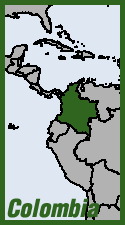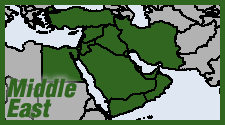 Well, this is a little funny. The US has been eager to find any evidence that the left-wing government of Venezuela is tainted by narco-trafficking. But now it looks like a Florida police force may have been co-opted by the Venezuelan narco-networks. Federal authorities now say that for two years starting in 2010, police in Bal Harbour, Miami-Dade County, funneled millions in drug money into the bank accounts of Venezuelans—including William Amaro Sánchez, now special assistant to President Nicolás Maduro. The supposed goal was to disrupt the networks. But this supposed undercover sting operation generated millions for a local police task force and never made a single arrest.
Well, this is a little funny. The US has been eager to find any evidence that the left-wing government of Venezuela is tainted by narco-trafficking. But now it looks like a Florida police force may have been co-opted by the Venezuelan narco-networks. Federal authorities now say that for two years starting in 2010, police in Bal Harbour, Miami-Dade County, funneled millions in drug money into the bank accounts of Venezuelans—including William Amaro Sánchez, now special assistant to President Nicolás Maduro. The supposed goal was to disrupt the networks. But this supposed undercover sting operation generated millions for a local police task force and never made a single arrest.


 Well this is rich. Just one month after a
Well this is rich. Just one month after a  Being the governor of Mexico's Pacific coastal state of Colima seems to be high-risk proposition —even once you're out of office. Two gunmen shot
Being the governor of Mexico's Pacific coastal state of Colima seems to be high-risk proposition —even once you're out of office. Two gunmen shot  In an utterly maddening decision, on July 28 the
In an utterly maddening decision, on July 28 the 





Recent comments
2 weeks 4 days ago
6 weeks 2 days ago
10 weeks 2 days ago
11 weeks 1 day ago
21 weeks 1 day ago
25 weeks 1 day ago
26 weeks 2 days ago
26 weeks 2 days ago
47 weeks 2 days ago
51 weeks 3 days ago